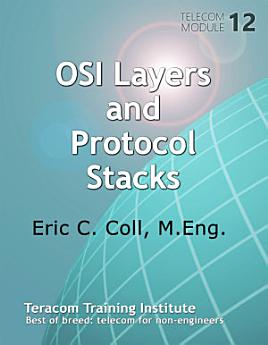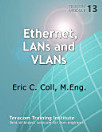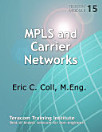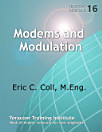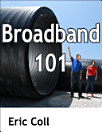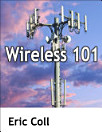The OSI Layers and Protocol Stacks
About this ebook
There are so many functions that must be performed to interoperate systems, a structure is required to organize the functions so that separate issues can be treated separately.
We'll explore the most commonly-used structure, the ISO Open Systems Interconnection 7-Layer Reference Model.
You'll learn what a layer is, the purpose of each layer, examples of protocols like TCP and IP used to implement layers, and gain a true understanding of how a protocol stack works for applications like web surfing and VoIP.
Telecom Module 12
Detailed Outline
12 OSI Layers and Protocol Stacks
12.1 Protocols and Standards
..... 12.1.1 Functions To Be Performed
..... 12.1.2 Monolithic vsStructured Protocols
..... 12.1.3 Open Systems and Standards
12.2 ISO OSI Reference Model
..... 12.2.1 Layers
..... 12.2.2 Separability of the Layers
..... 12.2.3 Protocol Stacks
12.3 The OSI 7-Layer Model
12.4 Physical Layer: 802.3, DSL, DOCSIS, Wireless
12.5 Data Link Layer: 802 MAC
..... 12.5.1 LANs, Frames and Layer 2 Switches
..... 12.5.2 MAC Frames and MAC Addresses
..... 12.5.3 Other Data Link Protocols
12.6 Network Layer: IP and MPLS
..... 12.6.1 Packet-Switched Networks
..... 12.6.2 Routing Table Updates
..... 12.6.3 MPLS
12.7 Transport Layer: TCP and UDP
..... 12.7.1 Reliability
..... 12.7.2 Port Numbers
12.8 Session Layer: POP, SIP, HTTP
..... 12.8.1 Password Authentication
..... 12.8.2 Authentication Servers
..... 12.8.3 Password Caching
..... 12.8.4 Cookies
..... 12.8.5 Client-Server Sessions
..... 12.8.6 Peer-Peer Sessions
12.9 Presentation Layer: ASCII, Encryption, Codecs
12.9.1 Character Coding
..... 12.9.2 E-Mail Coding
..... 12.9.3 Codecs
..... 12.9.4 Data Compression
..... 12.9.5 Symmetric Encryption: Private Key
..... 12.9.6 Asymmetric Encryption: Public Key Encryption and Digital Signatures
..... 12.9.7 Example of Separability of Layers
..... 12.9.8 Example of Peer Protocol
12.10 Application Layer: SMTP, HTML, English …
..... 12.10.1 Email
..... 12.10.2 More Application Layer Examples
12.11 Protocol Stacks
..... 12.11.1 Example: Web Surfing
..... 12.11.2 Voice over IP
12.12 Protocol Stack in Operation: Ukrainian Dolls
..... 12.12.1 Communications Flow
..... 12.12.2 Segmentation at Each Layer
..... 12.12.3 Nested Headers
12.13 Standards Organizations
..... 12.13.1 ISO
..... 12.13.2 DOD and IETF
..... 12.13.3 ITU and Bellcore
..... 12.13.4 TIA and IEEE
..... 12.13.5 3GPP
..... 12.13.6 ANSI
About the author
Eric Coll is an international expert in telecommunications, broadband and networking, and has been actively involved in the telecom industry since 1983. He holds Bachelor of Engineering and Master of Engineering (Electrical) degrees.
Mr. Coll has broad experience, and broad knowledge of telecom developed working as an engineer in the telecommunications industry.
He has used his knowledge of telecom to develop and teach telecommunications technology training seminars to wide acclaim across North America since 1992... and answering questions at seminars for companies and organizations ranging from Bell Labs to the Department of Justice keeps things up to date.
In his spare time, Mr. Coll authors textbooks and online courses based on the latest updates to the seminar courses.
Mr. Coll also provides consulting services as a Subject Matter Expert in telecommunications to government, carriers, and their customers.
